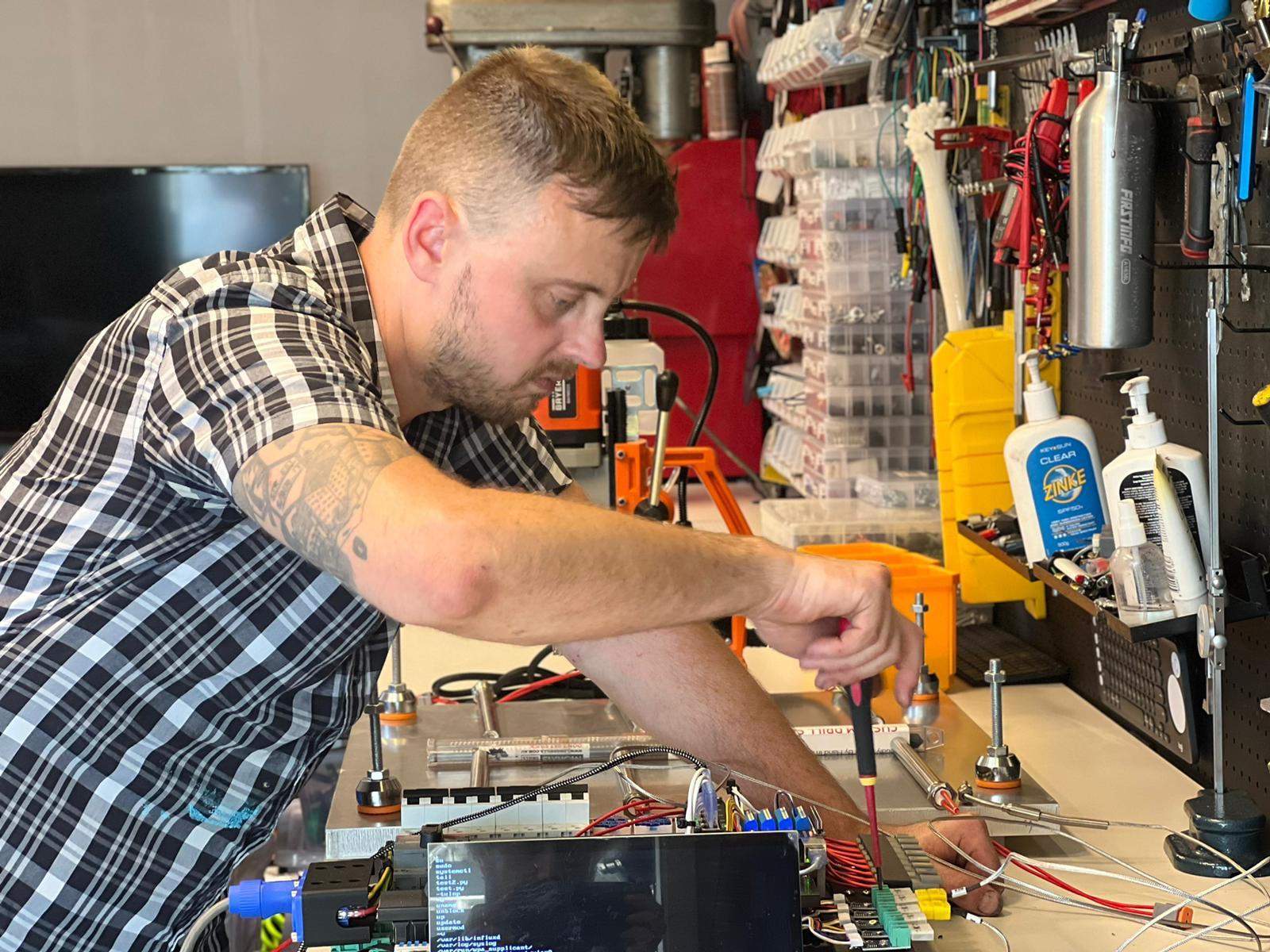Case Study
Posted on

Lasers are an effective way to combat the threat to Australian defence personnel from hostile drones. The problem is that lasers with ranges longer than a few hundred metres require heat exchangers the size of shipping containers to operate, making them unsuitable for remote deployment. Researchers at the University of Technology Sydney (UTS) are working with industry partners to overcome a technological roadblock hindering the development of smaller, lighter and cheaper heat exchangers.
Current thermal management heating solutions are ideal for some industries, such as in laser cutting, where manufacturers want the ability to use the laser at full power, all the time.
The use of lasers for defence purposes is more intermittent, meaning enormous savings in the size, weight, power and cost (SWaP-C) can be achieved by using phase-change material (PCM) to dampen the peak thermal load.
Currently, the inherent properties of PCMs mean they are unable to absorb heat quickly enough.
With the support of an Australia’s Economic Accelerator (AEA) Seed grant, Associate Professor Nick Bennett and his team at UTS are working on a novel way to overcome this roadblock, by unlocking a way to allow rapid heat absorption in PCMs.
“We had previously demonstrated this capability in the lab and on the small-scale, but this AEA project is allowing us to validate the performance of a full-scale prototype with higher heat loads, representative of laser technologies to be developed over the next decade,” A/Prof Bennett says.
“This can mean a heat exchanger is the size of a suitcase, rather than the size of a shipping container,” he says.
“Not only does this bring SWaP-C savings, but we expect it will equip Australia to keep its defence personnel safe in hostile environments.”
Industry collaboration plays a vital role in this project, not only accelerating the development process but also enhancing the overall quality and applicability of the technology.
“The input from industry collaborators has been an invaluable source of information in terms of end-user requirements,” A/Prof Bennett says.
In aerospace and defence, SWaP-C is a critical enabler, says Tom Tizard from MBDA Australia.
“In the case of laser directed energy, more than two thirds of the energy is converted to heat. Compact thermal technologies that can manage this heat are very important, and a key enabler that will make the logistics of using lasers easier for the ADF,” Mr Tizard said.
Through the combined efforts of researchers and industry, significant strides are being made in developing advanced defence technologies.
The AEA program is funding projects that align with national priorities to help take innovative ideas through to proof-of-concept and proof-of-scale as projects progress towards commercialisation and the creation of new businesses.
Visit the AEA website and AEA LinkedIn page for further updates.
